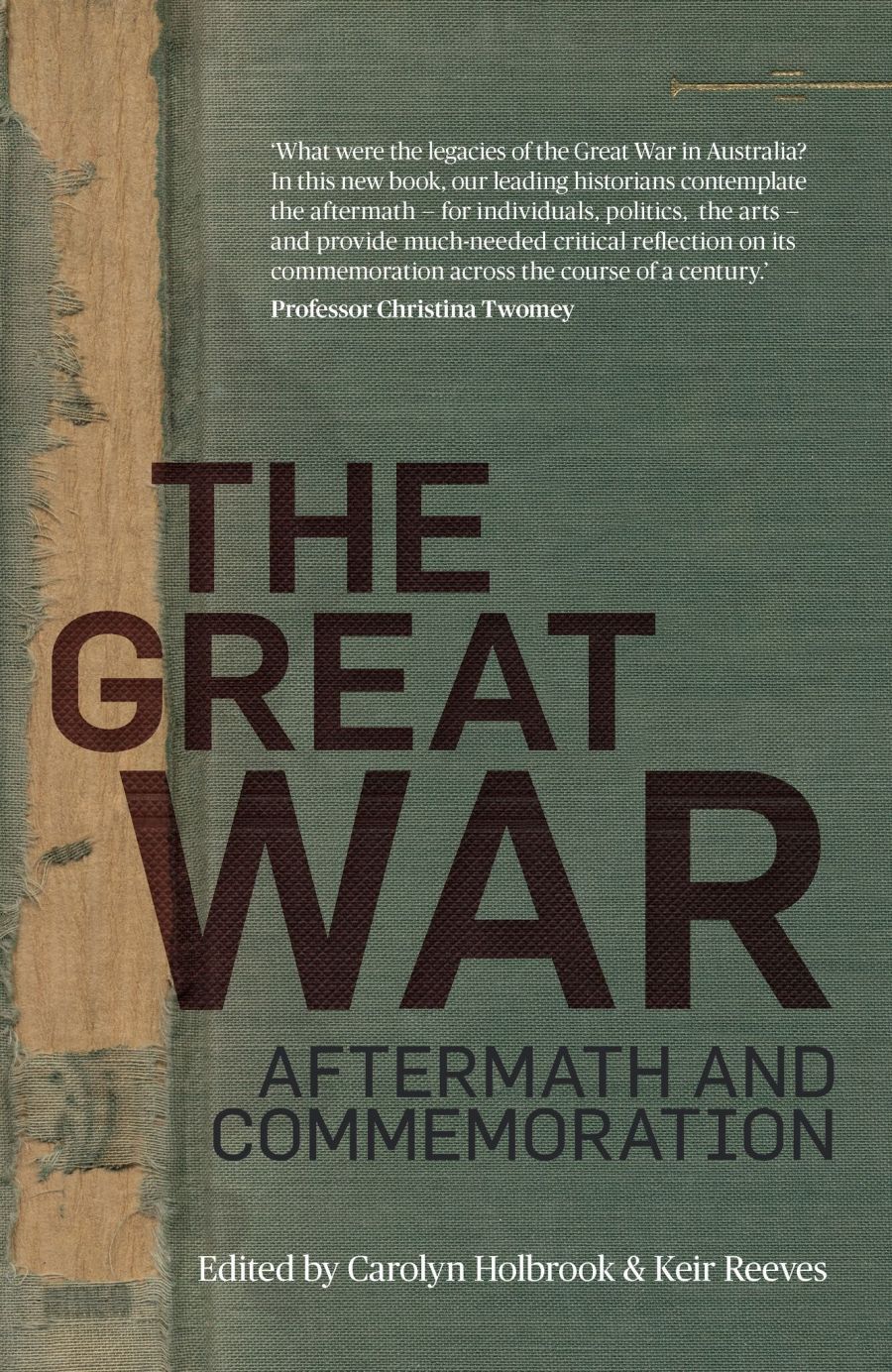
- Free Article: No
- Contents Category: Military History
- Review Article: Yes
- Custom Highlight Text:
The centenary of World War I offered a significant opportunity to reflect on the experience and legacy of one of the world’s most devastating conflicts. In Australia such reflection was, on the whole, disappointingly one-dimensional: a four-year nationalistic and sanitised ‘memory orgy’ (to use Joan Beaumont’s wonderful phrase). It did, however, galvanise historians to produce important new studies of the war and to tackle long-standing questions about Australians’ attachment to Anzac. Many of those historians, established and early career, feature in The Great War: Aftermath and commemoration.
- Grid Image (300px * 250px):

- Book 1 Title: The Great War
- Book 1 Subtitle: Aftermath and commemoration
- Book 1 Biblio: UNSW Press, $34.99 pb, 304 pp
Other chapters reveal the effects of war on Australian politics and society. Though it may not have created the political wasteland it has long been accused of, the war (and the issue of conscription in particular) exacerbated tensions between Catholics and Protestants and led to heightened discrimination against Irish Australians. Indigenous veterans also experienced discrimination; the Returned Sailors’ and Soldiers’ Imperial League of Australia advocated on behalf of many, but their sporadic efforts reflected a broader social apathy towards Aboriginal Australians in the interwar period.
Cultural representations of the war and its commemorative history are also considered. We learn how the Australian Official War Art scheme developed to present a narrative of the war that privileged the masculine domain of the battlefront, and how Remembrance Day became ‘the poor cousin’ of Anzac Day on the Australian commemorative calendar. Recent efforts to perform on Brisbane stages ‘unconventional’ histories of the war, including the bitter debates about conscription, demonstrate that public consumption of history occurs in diverse settings, and that documentary theatre can offer more educationally focused rather than emotionally driven portrayals of Australians at war. The evolution of the Anzac legend into its modern, almost spiritual form – ‘Anzac 2.0’ – rounds out the book.
Several essayists are frank in their assessments that despite the incredible amounts of money, time, and effort that were poured into marking the centenary at the national and local level, certain myths about Australia’s involvement in the war still endure. They are also clearly frustrated that the commemorative splurge has embedded the belief that Anzac is Australian history even more deeply in the national psyche.
Marilyn Lake and Henry Reynolds, who first posed the question ‘what’s wrong with Anzac’ in 2010, continue in their respective contributions to challenge the oft-touted claim that World War I gave birth to the Australian nation. They argue that the war in fact curtailed years of democratic and social growth and reform, resulting in a divided country tied firmly to the apron strings of Britain. David Stephens, who was instrumental in establishing the Honest History association in 2013, details its commitment to reminding Australians of the ‘non-khaki parts’ of their history and reflects on the network’s attempts to challenge the official approach to the centenary. Bruce Scates offers a no-holds-barred comparative analysis of the Historial de la Grande Guerre at Péronne, France’s principal World War I museum, and the new Sir John Monash Centre at Villers-Bretonneux – ‘the single most expensive undertaking of the Anzac centenary’. He convincingly argues that the Centre is focused on eliciting emotional responses and aggrandising Australian involvement in the war rather than, like the Historial, educating visitors about its complex history. Scates, along with other prominent historians, resigned from his advisory role during the Centre’s development. The history and memory of the war continue to be entangled and politicised; Scates, Lake, Reynolds, and Stephens show that this often comes at the expense of fostering real historical understanding of the conflict and its consequences.
One of the most provocative themes in the collection is a pushback against the dominant trope of the traumatised veteran. Joan Beaumont exhorts us to shift our focus to ‘remembering the resilient’, those men who seemed to better adjust to, or cope with, life after war. Martin Crotty reveals the relative generosity of the Australian ‘Repat’ system of pensions, medical care, and other benefits for veterans, and Thomas Rogers shows how war service does not adequately explain or excuse the actions of one of the men accused of massacring at least thirty-one Aboriginal people at Coniston in the Northern Territory in 1928. While it is true that thousands of former servicemen bore visible and invisible scars of their service for years after the war, recognising that not all returned soldiers were necessarily ‘shattered Anzacs’, and that for many their war experiences were just one chapter in the lengthy story of their life, adds important balance to the history of the war’s individual, familial, community, and national impacts.
This is a valuable collection – accessible, engaging, considered – that clarifies, challenges, and complicates understandings of Australia’s experience of the war, and of the war’s place in the broader sweep of Australian history. The centenary revealed, as Carolyn Holbrook writes, that not all Australians are interested in extending their knowledge of World War I. The Great War makes a compelling case for why we should.


Comments powered by CComment